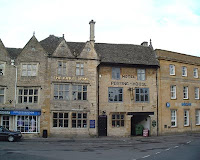The History of the Loch Ness Monster
 I first had the idea for this post when I was reading about Big Cat sightings in the newspaper. Notwithstanding my post a few weeks ago about the extinction of various wild species in the UK, I wondered if there had been reports of big cats roaming the UK countryside in the 19th century or earlier. That led me on to thinking about Scottish Wild Cats and from there I leapt to Loch Ness, metaphorically speaking. So here is a potted history of the Loch Ness Monster. I do like quirky history.
I first had the idea for this post when I was reading about Big Cat sightings in the newspaper. Notwithstanding my post a few weeks ago about the extinction of various wild species in the UK, I wondered if there had been reports of big cats roaming the UK countryside in the 19th century or earlier. That led me on to thinking about Scottish Wild Cats and from there I leapt to Loch Ness, metaphorically speaking. So here is a potted history of the Loch Ness Monster. I do like quirky history.Nessie was apparently first spotted by the Vikings. Celtic and Norse folklore has stories of water horses seen in the lochs. However, we do have to acknowledge that stories of terrifying Each Uisge, water horses, are quite common in Gaelic folklore so perhaps these cannot be taken as conclusive evidence.
The first written account of a meeting with the Loch Ness monster seems to be that of Adamnan  in 565 A.D. He describes St. Columba's sighting of a very large monster in Loch Ness. Legend tells of how St. Columba heard about the monster's murder of a man and how he rowed out to the centre of the loch to order the beast to desist from such attacks in the future. This account was written almost a century after the events took place and is open to interpretation. It is only one of many miracles attributed to St Columba so again (sorry!) perhaps we need to be a little sceptical on authenticity.
in 565 A.D. He describes St. Columba's sighting of a very large monster in Loch Ness. Legend tells of how St. Columba heard about the monster's murder of a man and how he rowed out to the centre of the loch to order the beast to desist from such attacks in the future. This account was written almost a century after the events took place and is open to interpretation. It is only one of many miracles attributed to St Columba so again (sorry!) perhaps we need to be a little sceptical on authenticity.
 in 565 A.D. He describes St. Columba's sighting of a very large monster in Loch Ness. Legend tells of how St. Columba heard about the monster's murder of a man and how he rowed out to the centre of the loch to order the beast to desist from such attacks in the future. This account was written almost a century after the events took place and is open to interpretation. It is only one of many miracles attributed to St Columba so again (sorry!) perhaps we need to be a little sceptical on authenticity.
in 565 A.D. He describes St. Columba's sighting of a very large monster in Loch Ness. Legend tells of how St. Columba heard about the monster's murder of a man and how he rowed out to the centre of the loch to order the beast to desist from such attacks in the future. This account was written almost a century after the events took place and is open to interpretation. It is only one of many miracles attributed to St Columba so again (sorry!) perhaps we need to be a little sceptical on authenticity.After this, written accounts of monster encounters seem thin on the ground. One Duncan Campbell witnessed ‘a terrible creature on the shores of the Loch’ in 1522. In 1650 Richard Franck reported seeing "swimming islands" in Loch Ness. The monster was seen in the nineteenth century but apparently the man who sighted the beast was so shocked he did not speak much about the incident which seems rather a pity.
 So what do you think? Is it possible that a creature that apparently looks like a seal or an eel, a slug or even a sheep (!) that is from 25 to 75 foot long, could live under the waters of Loch Ness? And could it possibly have survived from the 6th century to the present day? Or is it just a folk tale of the sort that all cultures seen to have, whether it is Bigfoot, the Yeti or Nessie?
So what do you think? Is it possible that a creature that apparently looks like a seal or an eel, a slug or even a sheep (!) that is from 25 to 75 foot long, could live under the waters of Loch Ness? And could it possibly have survived from the 6th century to the present day? Or is it just a folk tale of the sort that all cultures seen to have, whether it is Bigfoot, the Yeti or Nessie?


Comments
The film Loch Ness contained the line "you have to believe before you can see" well my Gran used to say that. I do believe but I am haven't seen ... YET!
http://www.nessie.co.uk/
If Dolphins can get lost in New Jersey and New York rivers, then anything is possible........me a New Jersey woman...LOL